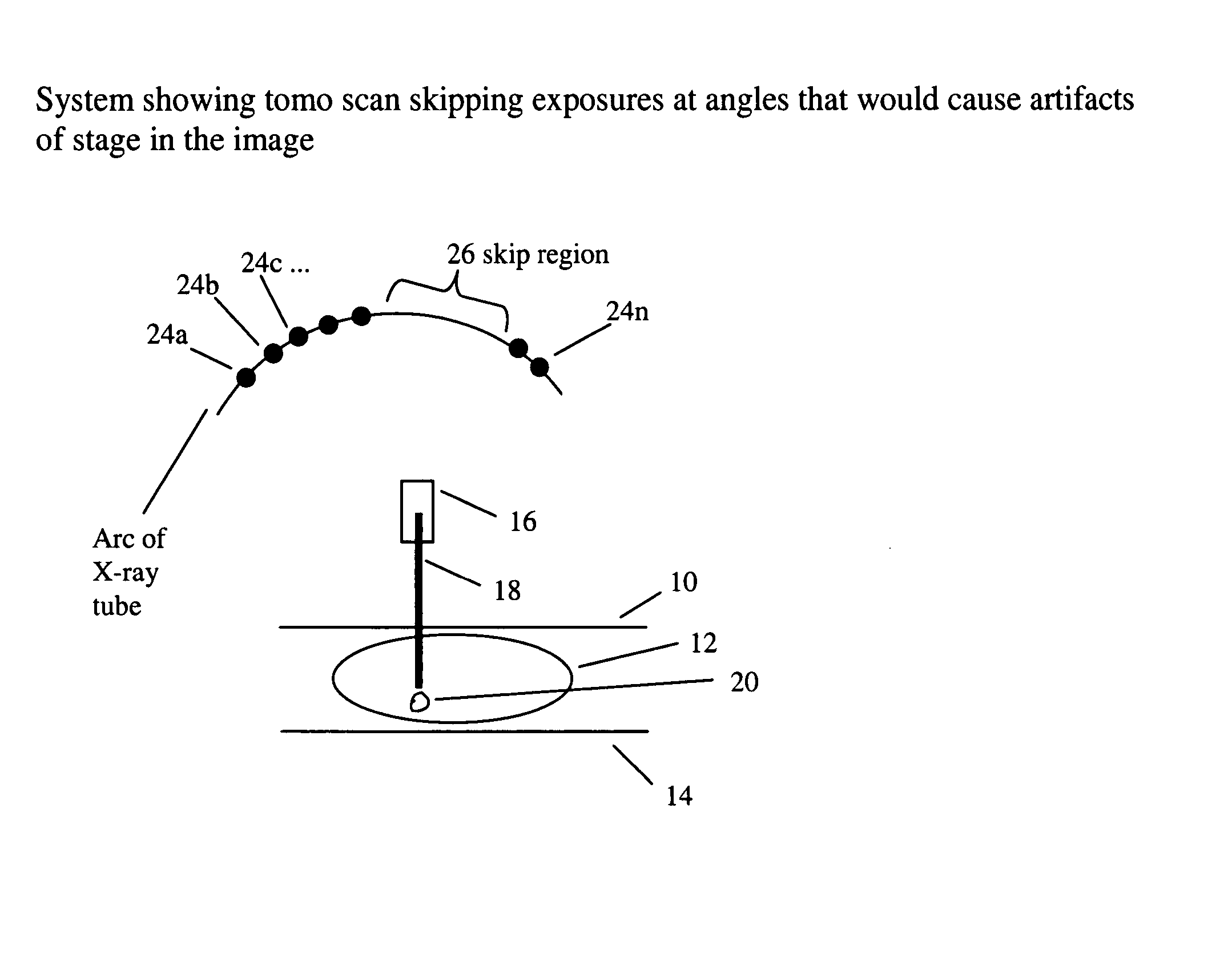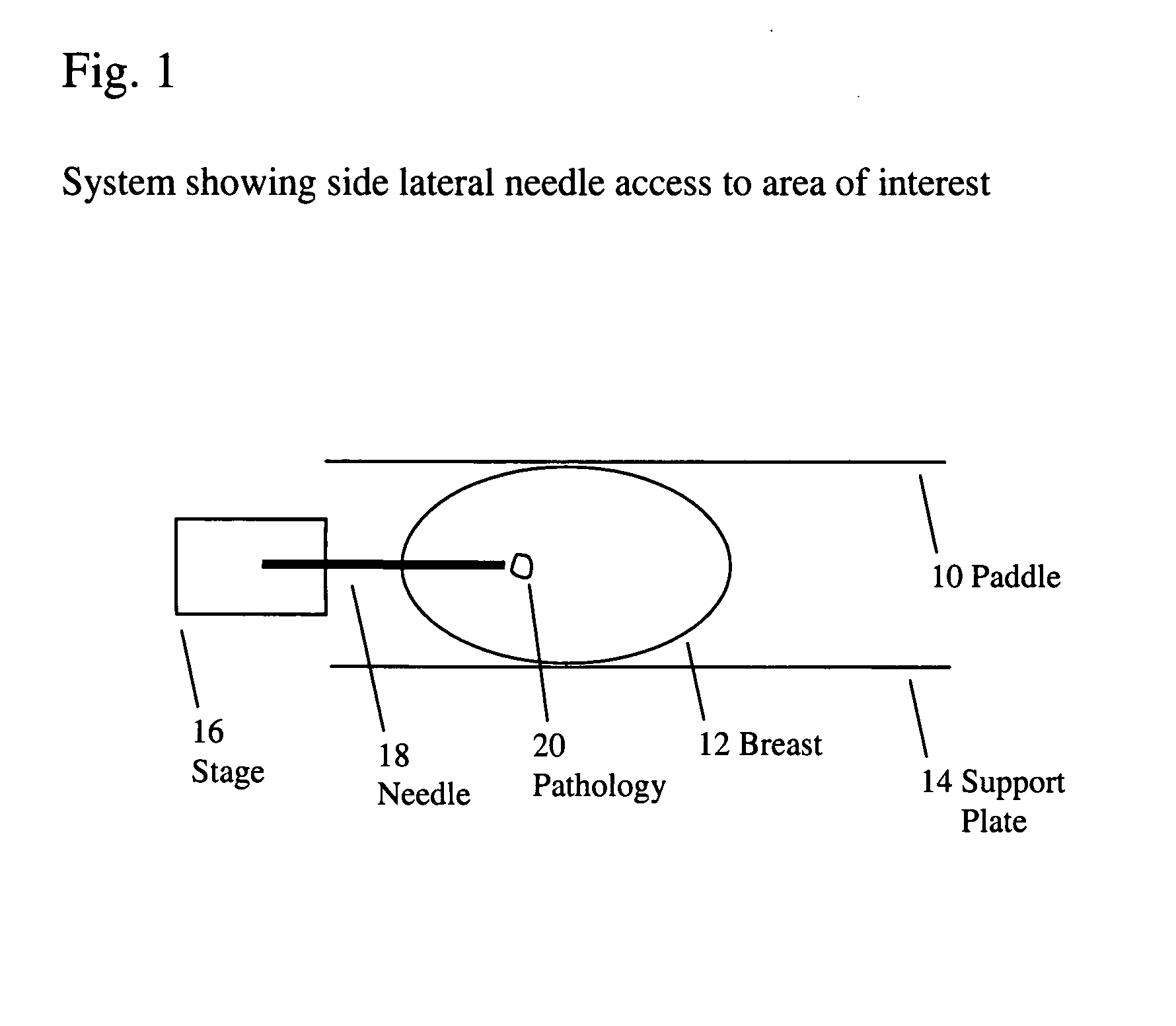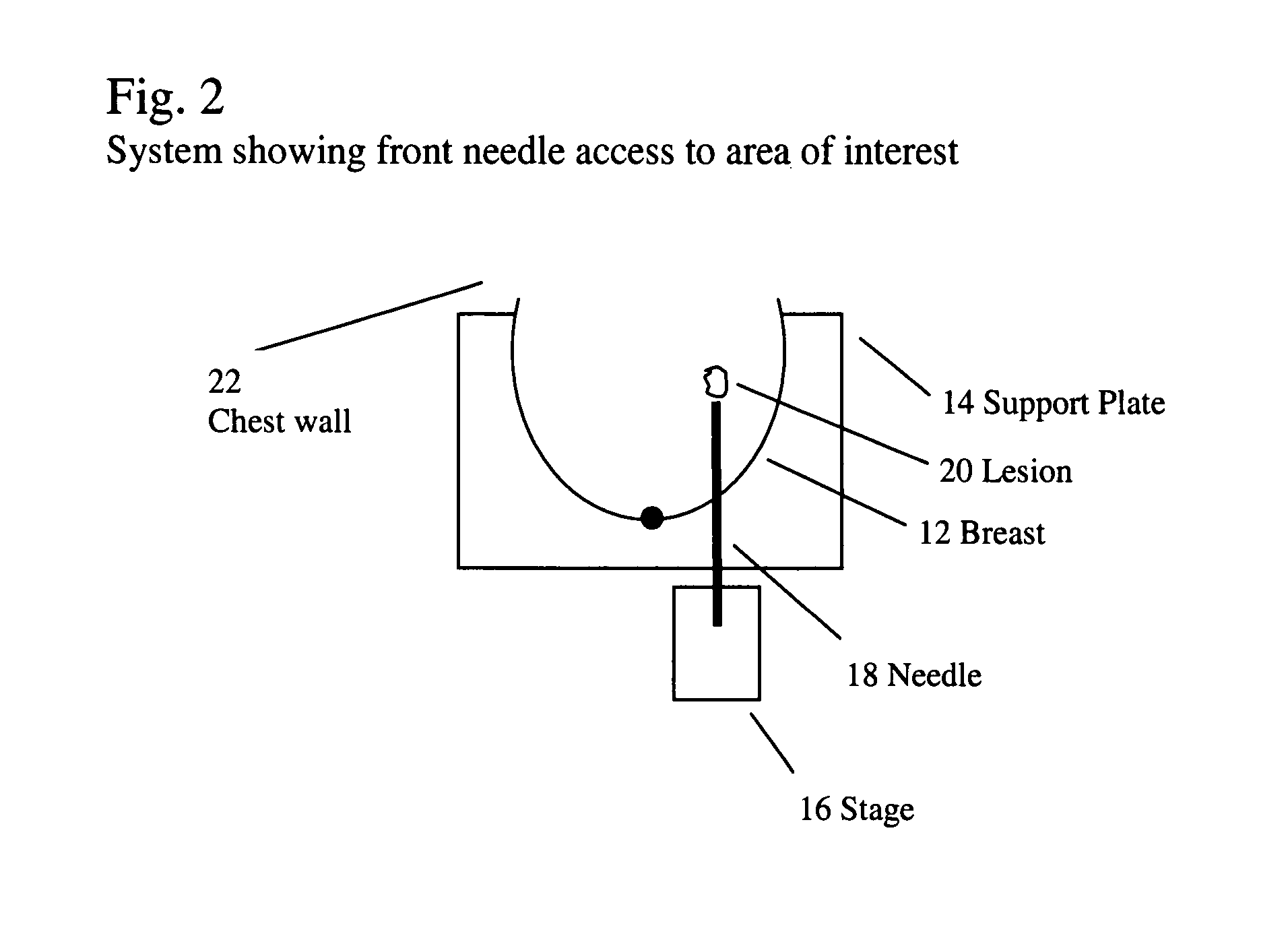Breast biopsy and needle localization using tomosynthesis systems
a technology of tomosynthesis and biopsy, which is applied in the field of biopsy and needle localization using tomosynthesis system, can solve the problems of less useful x-rays from angles that shadow the gun and stag
- Summary
- Abstract
- Description
- Claims
- Application Information
AI Technical Summary
Benefits of technology
Problems solved by technology
Method used
Image
Examples
Embodiment Construction
OF PREFERRED EMBODIMENTS
[0028]FIG. 1 illustrates lateral needle access, where a breast compression paddle 10 and a breast support plate 14 can be a part of an otherwise known tomosynthesis system such as described in the co-pending patent applications identified above and incorporated by reference in this patent specification, and a biopsy needle stage 16 and a needle 18 such as used, for example, in the patents identified above that pertain to prone biopsy. For clarity, the rest of the tomosynthesis system and other parts of the biopsy apparatus are not shown in this FIG. 1, and a detailed discussion of the basic aspects of tomosynthesis is not included herein. The reader is referred to the references cited herein for such discussions. For example, image reconstruction can be performed using filtered back projection (for rapid speed of reconstruction) and / or artifact reduction methods (such as ordered statistics back projection), as disclosed, for example, in U.S. Patent Applicatio...
PUM
 Login to View More
Login to View More Abstract
Description
Claims
Application Information
 Login to View More
Login to View More - R&D
- Intellectual Property
- Life Sciences
- Materials
- Tech Scout
- Unparalleled Data Quality
- Higher Quality Content
- 60% Fewer Hallucinations
Browse by: Latest US Patents, China's latest patents, Technical Efficacy Thesaurus, Application Domain, Technology Topic, Popular Technical Reports.
© 2025 PatSnap. All rights reserved.Legal|Privacy policy|Modern Slavery Act Transparency Statement|Sitemap|About US| Contact US: help@patsnap.com



